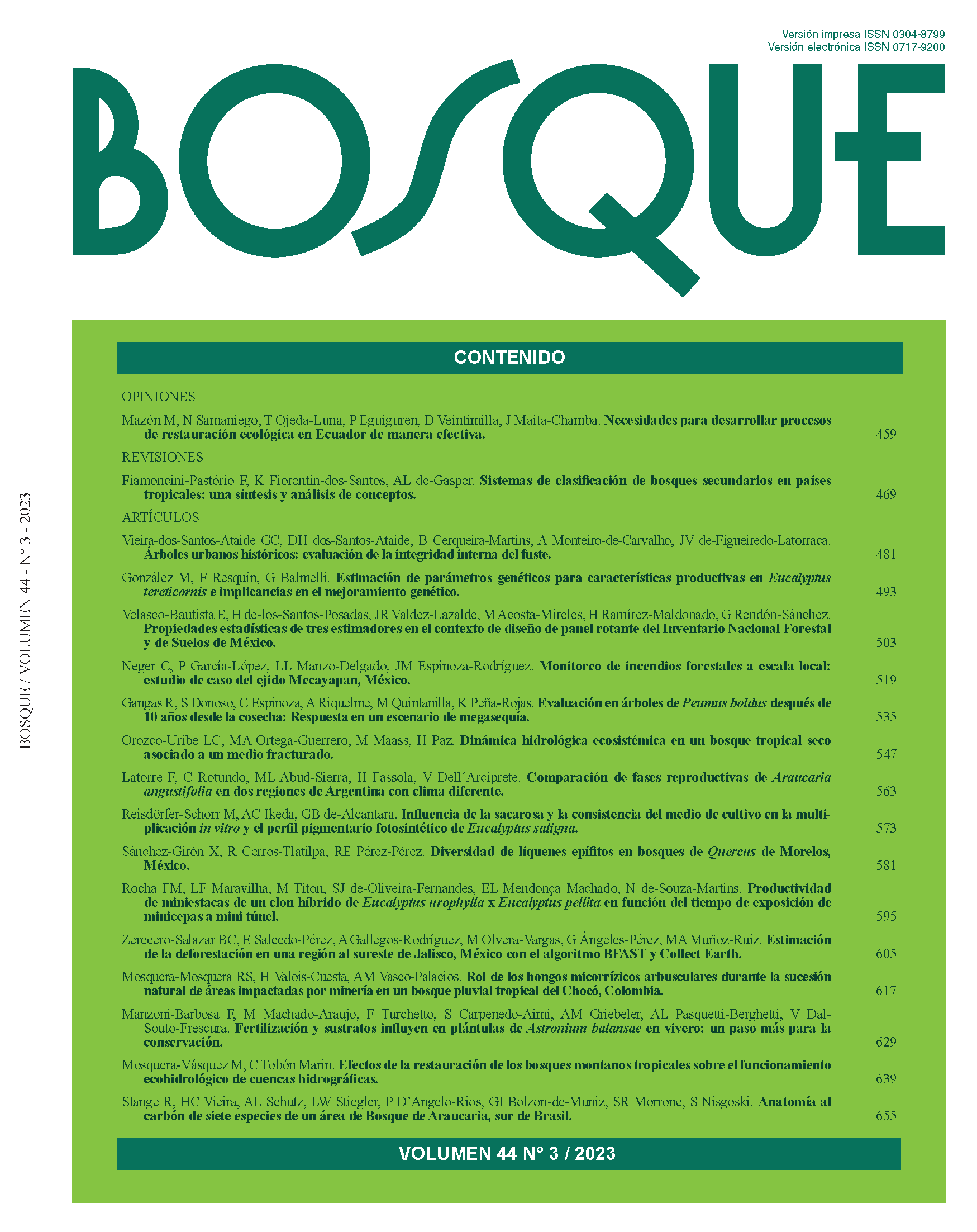Assessing deforestation in southeast Jalisco, Mexico using the BFAST algorithm and Collect Earth
Main Article Content
Abstract
The forested regions of the state of Jalisco have been increasingly impacted by changes in land use, including in the southeast region, where the rise in avocado cultivation within forested areas has led to more visible deforestation in recent years. Despite these changes, there is a lack of studies that use precise methods to estimate deforestation in the area. This study aimed to estimate deforestation rates over the last 18 years in the southeast region of Jalisco. In the preliminary phase of the study, changes in forest cover spanning an 18-year period, starting in the year 2000, were assessed through the multitemporal analysis of Landsat-NDVI images using the BFAST algorithm. These changes were subsequently validated using high-resolution images and the tools provided by Collect Earth. The post-change cover, the year of change, and any other associated disturbances were also recorded. A map was generated, and its accuracy was evaluated based on map classes. Refinements were made to estimate deforested areas, and the annual deforestation rate was calculated to facilitate comparisons with regions displaying similar dynamics. The results indicate a deforestation extent of Â1 ± 2 × S(Â1) = 3.986 ± 1.332 ha over the eighteen-year period, corresponding to an annual deforestation rate of 0.19 %. The most substantial changes were observed in the conversion of forested areas into agricultural land, predominantly affecting pine and pine-oak ecosystems. Conversely, deforestation in low deciduous forest primarily involved the expansion of pre-existing agricultural areas and frequent fires. The overall accuracy of the map was determined to be 82.5 %.

